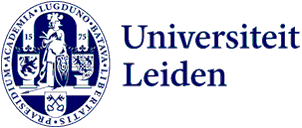
Holding the Byvanck Chair in times of corona
Professor Caroline Vout, Cambridge University, was awarded the Leiden University Byvanck Chair in 2020. In a pre-Covid-19 world, the Byvanck Chair would stay in Leiden for seminars, lectures, and research activities. Instead, the pandemic disrupted this schedule. Last month, Vout taught her masterclass on Greek and Roman bodies virtually: ‘We studied not only on the representation of these bodies in art ancient and modern, but also tried to get at the leaking, smelly things they were in reality.’
Crossroads
Professor Vout trained in classics and art history at Cambridge and the Courtauld Institute in London. ‘After some time teaching at Bristol and Nottingham universities, I returned to Cambridge, applying for an open job in classics.’ Her work at the crossroads of archaeology, art history, ancient history and literature made her the perfect choice for the Byvanck Chair. ‘As well as visual culture, I focus on cultural history, gender, and sexuality in antiquity.’
2021 is Professor Vout’s second year of her Byvanck Chair term. ‘Covid-19 has impacted this period quite a lot. My Byvanck Lecture had to happen virtually.’ Even so, Vout has made her presence felt in other ways. ‘I contributed to the catalogue of the upcoming Domitian exhibition at the National Museum of Antiquities in Leiden, and to reading groups, and workshops, as well as joining the External Advisory Board of the Leiden University Center for the Arts in Society.’ Aside from that, she recently gave her Byvanck graduate seminar entitled ‘The Classical Body Exposed’.

The mirage of the classical body
The Classical Body Exposed was an intensive series of seminars, four hours a day. ‘The series was designed to get behind the mirage that is the classical body, to understand where that image comes from and what it reveals and conceals, and to determine whether we even can get at the flesh and blood bodies of the Greek and Roman world beneath.’ Of course, given the diversity of this ever-changing world, this is a massive undertaking. ‘The seminars encompassed the period from 600 BC to the Christian Greece and Rome of the 4th century AD’.
Dialogues
The series was in dialogue with a book Vout is currently finishing on the same topic. ‘Students receive draft chapters to read, and we use these and pictures from the book as springboards for discussion.’ The seminars were received with enthusiasm. ‘The students seemed to be enjoying themselves as much as I was, and to relish being made to leave their comfort zone and to think about the material in new, interdisciplinary, ways. During the lectures PhD candidates found themselves in dialogue with master’s students, students of Classics with students of archaeology and art history.’
Vout is hoping that it will be possible to meet up in person with the students, when she is in Leiden in October. ‘I would like to take the students out for dinner in Leiden, while I am in the city for a workshop on classical spolia, organised by Miguel John Versluys and Irene de Jong’

Reactions on The Classical Body seminar series
Glyn Muitjens (PhD candidate in Classics, Faculty of Humanities)
'Professor Vout’s masterclass on the classical body was a breath of fresh air, emphasizing the pervasiveness and changing meanings of the body throughout antiquity. Although the focus was on art, the interdisciplinary approach of the seminars ensured every student could participate in the discussion from their own expertise—as a classicist, I felt very engaged by the material. The differences in foreknowledge among the participants fostered open discussion, leading us to think about ancient bodies in new and surprising ways. As the course offers tools to rethink even well-known ancient works of art, I can almost guarantee your mind will be blown!'
About the Byvanck Funds
The Prof. A.W. Byvanck Fund promotes archaeological and art history research at Leiden University in the field of classical antiquity within and outside of the Netherlands. It also provides support to the Bulletin Antieke Beschaving (BABESCH; Bulletin of Ancient Civilisation), including the annual Byvanck Award and funding of the annual Byvanck Lecture. The Fund focuses particularly on archaeological research in the tradition of Prof. A.W. Byvanck and Dr Lili Byvanck-Quarles van Ufford themselves. That is to say: research on classical antiquity at the interface between archaeology, art history, ancient history and classical languages.
